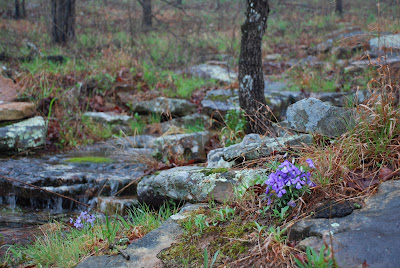






I walked along the trail to the embankment along the south side of Blackbird Marsh. I spotted 2 male Red-winged Blackbirds in the marsh, each perched upon a tall stalk of grass emitting their usual rattle. Later I would see another male RWBB, however I would not see any female RWBBs during this particular outing. I spent some time photographing the marsh then decided to walk over to the boardwalk.
I walked along the boardwalk in search of a subject to photograph. While I was taking photos of some cattails using my tripod I could hear a strange whinny coming from a dense cluster of grass several feet from the boardwalk. I was unable to gain a advantageous view of the suspect, so I walked on not knowing the source of the whinny. As I neared the corner of the boardwalk a small bird fluttered (a labored flight) up from the marsh, landed on the railing, then frantically flew to the cover provided by a group of cattails 10 yards from the boardwalk. I quickly flipped through my guide, searched for Rails, and confirmed the fleeing bird as a Sora. I am sure that the strange whinny I heard earlier had been a concealed Sora.
I walked to the edge of Lake Sherry, careful not to spook the pair of Blue-winged Teal foraging along the banks. The pair flew off and I continued on the path to the observation deck, my attention diverted by the loud honks of the Canada Geese in Lake Sherry. I mounted my camera on the tripod in hopes of catching some decent photos of the Blue-winged Teal that ventured close to the shores. As I waited quietly a small shorebird landed on a small log ten yards from the observation deck, well within range of the 135mm lens. I snapped several photos of the shorebird which I used later to identify him as a Spotted Sandpiper.
A group of 12 Northern Shovelers could be observed foraging along the banks of Lake Sherry, never venturing very close to my position. I counted 4 other Blue-winged Teal in Lake Sherry, bringing the total of BWT seen to 6. I counted 7 Canada Geese on Lake Sherry as well as 33 Gadwall, most of which were congregated on the east side of the lake.
I scanned the surrounding trees for birds, my eye attracted to a small passerine relocating to a new perch overhead. I trained my binoculars on the bird, obviously a warbler, his head and breast a bright yellow. I noticed the light streaking on the breast and quickly remembered seeing such a pattern of the breast of a Yellow Warbler. I confirmed my suspicion by consulting my Sibley guide; the warbler being a new addition to my Lifelist.
I walked to Warren Bridge with the intention to take the Heron Loop of the trail before heading back to my car. As I was crossing the bridge I saw a small dark shape dart across the creek and land on a perch. I quickly identified the shape as a Eastern Phoebe, the constant tail-dipping a clear identifier.
Overhead the clouds rumbled and a flash of lightning lit the sky to the west, throwing my plans to take the Heron Loop into question. I opted to head back to my car, a good idea since it began to pour when I was within 10 yards of my car.
Location: Mohawk Park--Oxley Nature Center
Observation date: 4/30/09 Number of species: 22
Canada Goose - Branta canadensis 7
Gadwall - Anas strepera 33
Blue-winged Teal - Anas discors 7
Northern Shoveler - Anas clypeata 12
Great Blue Heron - Ardea herodias 1
Great Egret - Ardea alba 1
Sora - Porzana carolina 1
Spotted Sandpiper - Actitis macularius 2
Wilson's Snipe - Gallinago delicata 12
Red-bellied Woodpecker - Melanerpes carolinus 1
Eastern Phoebe - Sayornis phoebe 1
Blue Jay - Cyanocitta cristata 1
American Crow - Corvus brachyrhynchos 2
Carolina Chickadee - Poecile carolinensis 3
Tufted Titmouse - Baeolophus bicolor 1
Carolina Wren - Thryothorus ludovicianus 1
Blue-gray Gnatcatcher - Polioptila caerulea 2
Eastern Bluebird - Sialia sialis 2
European Starling - Sturnus vulgaris 30
Yellow Warbler - Dendroica petechia 1
Northern Cardinal - Cardinalis cardinalis 9
Red-winged Blackbird - Agelaius phoeniceus 3
New Additions to SPQ's Lifelist:
158) Sora (http://www.allaboutbirds.org/guide/Sora/id)
159) Yellow Warbler (http://www.allaboutbirds.org/guide/yellow_warbler/id)
Photos (Numbered from top to bottom)
1) A lilypad in Blackbird Marsh.
2) Cattails growing along the boardwalk in Blackbird Marsh.
3) A group of Northern Shovelers forage along the banks of Lake Sherry.
4) A Spotted Sandpiper hunts bugs along the water's surface in Lake Sherry.
5) Another photo of the Spotted Sandpiper.
6) An overcast day at Lake Sherry.
7) Some wildflowers growing along Coal Creek.
-SPQ 4/30/2009
















































